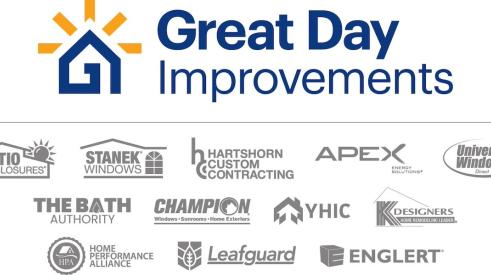The client on the phone isn't happy. The crew trashed her bathroom, someone tracked mud on the carpet, and a sub parked his truck on the lawn. Another client calls to say she really loves the new kitchen, but did anybody happen to notice that the pendant light fixture was dangling about 3 inches from a cabinet door? Could someone please move it?
Time to Man Up
The simple fact is that you can’t have customers without, at some point, having customer complaints. Especially in a high-service business like contracting, where things go wrong all the time, no matter how good you or your employees are or how well-managed the operation.
In contracting, as in life, disappointments abound. And, as in life, it’s all about how you handle those disappointments.
When you get that call, it’s tempting to yield to your feelings of impotence and frustration and say, "So what do you want me to do about it?" But if you do that, you’ll find that the problems will begin to multiply.
When a complaint—justified or not—comes to your desk, it puts everything you say you stand for to the test. You’re certainly not going to make money on it. If anything, you’re going to lose money. And maybe it’s possible that the customer is pushy, overexcited, delusional, or impossible to please. It doesn’t matter. If you dodge the call, deny responsibility, or indefinitely defer taking action, all you do is impugn your own integrity in the eyes of the customer and, ultimately, in the eyes of your employees.
How You Choose to See It
Bear this in mind: Most customers who are disappointed in some way won’t complain. At least not to you. It’s the tiniest minority who will be on that phone, demanding to speak with someone. Just 4 percent of those with cause to complain will actually have the gumption to contact you, according to 75 Customer Service Facts, Quotes & Statistics, published by website HelpScout.net. They’ll complain to their family, their friends, their colleagues and co-workers, but not to the one who is the ostensible source of their frustration. So look on the complainant as someone who’s actually doing you a favor. He or she has handed you a valuable piece of information about something going on in your organization that could well be systemic. And likely enough, the client wouldn’t have bothered contacting you unless they thought you would take responsibility for it.
Now, says the website of Dunn Edwards Paints, “the challenge is knowing how to handle the situation so that the client continues to believe you run a good company. And, even better, the customer is so impressed by your response, that he or she becomes a passionate advocate for your brand.”
Do’s and Don’ts
Once you get that call, a few simple rules are in order, according to Entrepreneur magazine:
- Don’t send a template response
- Don’t wait too long to respond
- Don’t respond at length
- Don’t make excuses
- Don’t forget to thank the customer for bringing it to your attention
Those are the don’ts.
Here’s the big DO, according to several sources, including Inc. magazine: Mentally step back and listen. Really listen. Tune in exclusively to what the person is saying. “Give the customer your full attention and listen to the whole problem before responding,” advises website SkillsYouNeed.com. “Put yourself in their shoes - if you had a problem, you would want someone to listen to you. Appearing disinterested, or attempting to argue back, will only exacerbate the situation.”
What’s also key is the speed with which you respond, the website points out: “Complaints should always be resolved as quickly as possible. The aim is to make the customer feel as though their problem is being treated as a priority, without being rushed.”
Don’t respond to anger or irritation in kind. You’ll get nowhere. And don’t interrupt, advises WikiHow.com. Once you’ve heard all the client has to say, repeat back to them the major points they’ve made. Find out what they want you to do about the problem. “Let them know you understand their complaint, without agreeing with them.” Once you understand what the problem is, both you and the customer together should agree on a solution, and your company must execute that solution as quickly as possible.
When Complaints Go Online
Years ago, a complaint landed on your desk, or your cell phone voice mail. Today it may not even come to your attention first, instead, it may go straight out to the world, via review websites, and you'll have to deal with it there.
A nightmare, right? But think about it ... When you read the reviews of a company that has dozens or hundreds of them, you’re unconsciously scanning for a problem. You want to see how the company resolved it. An online complaint is your chance to be a hero in public.
If that happens, home improvement CRM software company Improveit360.com suggests the following: “Your best bet is to offer to reach out to that customer in your response. If you can comment, let them know you’d like to talk as soon as possible to try and fix any issues they may have. Avoid the underhanded apology, ‘I’m sorry you think there’s a problem.’ It’s better to say, ‘I’m sorry you’re upset. Let me call you so we can take care of this.’ Don’t get into details, but let others who may see the review or complaint know you care, you’re interested, and you’re willing to address the issue. “
The Huffington Post, in a thorough article by etiquette expert Diane Gottsman about managing online complaints, suggests you request that the complainant send you details about the situation via private message. Other suggestions: “… apologize, let them know why it occurred, and what you are doing to ensure it won’t happen again,” Gottsman writes. And look beyond the actual complaint to see if there's a lesson for you there, Gottsman says: “Take the time to properly assess the information a customer related, and look for ways your company can make positive changes.”
Add new comment
Related Stories
Brian Gottlieb Receives Remodeling Mastery Award
Presented by industry icon, Mark Richardson, the award celebrated Gottlieb’s extraordinary impact on remodeling
What's Beyond the Hammer?
Working with Brian Gottlieb on the book Beyond the Hammer provided a masterclass on how to build an aligned team
5 Counterintuitive Strategies to Improve Your Business
Follow these strategies to inspire employees, instill trust, and beat the competition
Couple Act As Much More Than General Contractors
How LBR Partners uplifts and educates their Spanish-speaking trade partners
How to Correctly Hire for Business Growth
Refloor CEO Brian Elias shares exactly how his company hires the correct people for the correct seats
Power Home Remodeling Expands Financing Offshoot with $400M from Goldman Sachs
Industry-leading home improvement company Power plans to grow its fintech offshoot fivefold with new investment
· sponsored
Increase sales and grow your business with Momnt Contractor Financing
Give your clients simple, fast, and affordable payment options for the investments that matter most
Great Day Improvements Acquires LeafGuard and Englert
Leading home improvement company Great Day Improvements purchases two major brands from private equity firm Audax
Latest Private Equity Activity Signals Continued Strength in Home Improvement
A hot month for private equity means the industry remains opportunity-rich
Josh Sparks: To Infinity (Exteriors) and Beyond
A roofer-turned-CEO who’s succeeding in his mission of up-leveling the industry













